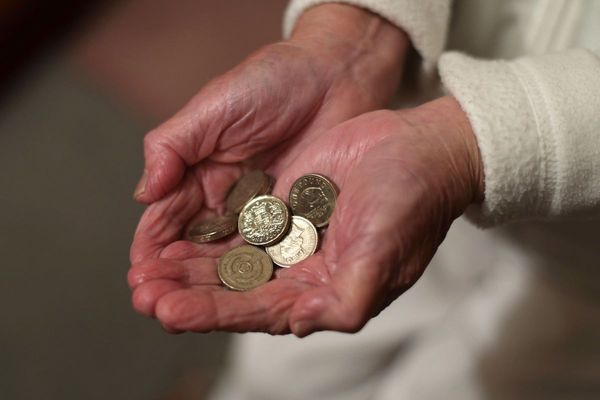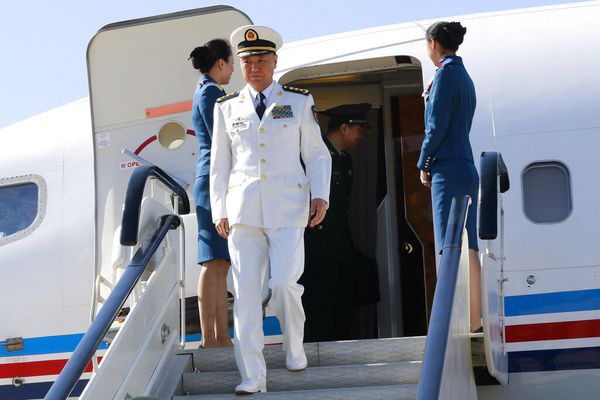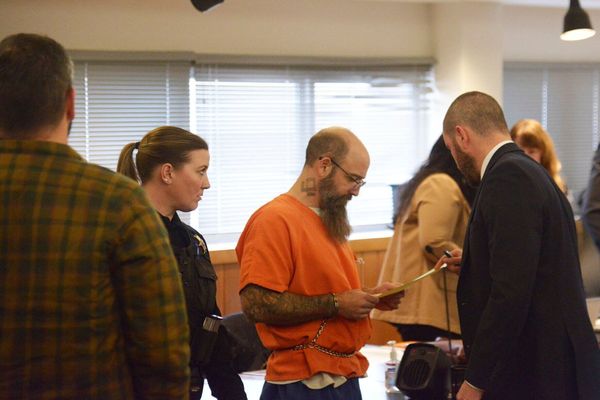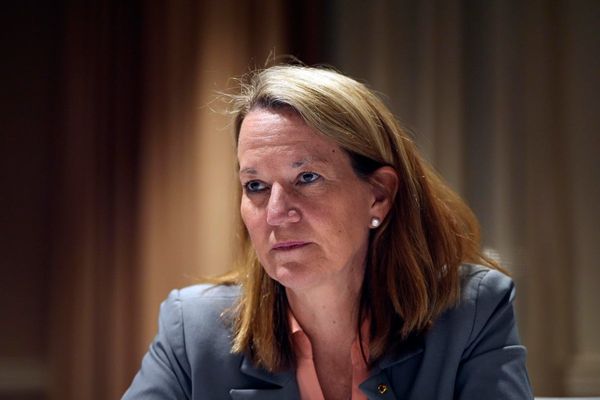KYIV, Ukraine — Russia’s invasion of Ukraine entered its 10th day on Saturday with a cease-fire — meant to allow the exit of civilians — quickly falling apart in two besieged southern Ukrainian cities amid renewed shelling from Russian forces, according to Ukrainian officials.
The cease-fire was set to begin at 9 a.m. Kyiv time under an agreement with the Ukrainian government, the Russian Defense Ministry said, making it the first concrete sign of cooperation between the two sides after they decided in negotiations this week to create humanitarian corridors aimed at evacuating civilians from conflict areas.
Pavlo Kirilenko, head of the Ukrainian government’s regional military administration in the eastern province of Donetsk, confirmed the cease-fire and evacuation of Mariupol in a post on Facebook. The city of Volnovakha was also covered by the agreement.
But about an hour after the evacuation began at 11 a.m. Kyiv time, Russian forces resumed shelling, making it impossible to move people out safely, Mariupol’s deputy mayor said. By 1 p.m., the Donetsk regional administration suspended the evacuation effort, with residents advised to head to shelters and abandon the gathering points where municipal buses were to spirit them out of the city.
The designated safe corridor from Mariupol was supposed to stretch about 140 miles northwest to the city of Zaporizhzhia, close to the site of a nuclear power plant that was set ablaze during shelling Friday. Kirilenko said it was “strictly forbidden to deviate from the route of the humanitarian corridor.”
Before the evacuation began, he called on residents with their own vehicles to “take people with you, fill your vehicle as much as possible.”
The announcement of the cease-fire agreement came as Russian forces have pressed the attack in Ukraine’s south, the one area of the country where their campaign appears to be making gains.
Mariupol, a southeastern port city of nearly 450,000 people, has for days suffered a relentless Russian barrage and is all but surrounded. On Saturday, Russian Defense Ministry spokesman Maj. Gen. Igor Konashenkov said in a report quoted by Russian state news operator Tass that separatist forces “continue to tighten the encirclement around Mariupol.”
The bombardment of the city — which has left many without basic services and dwindling supplies — halted briefly when the cease-fire began but soon started up again, Mariupol’s deputy mayor, Sergei Orlov, told the BBC.
“At first our people told (us) that the shelling stops for a little time, but then it continues, and they continue to use hard artillery and rockets to bomb Mariupol. That’s why people are very scared,” Orlov said.
“They told to us that (the) road from Mariupol to Zaporizhzhia is safe. But we received information that there are hard fights on this road ... and it’s not safe to go on this road because of these fights,” Orlov added. “They continue to destroy Mariupol. We decided to move our citizens back because it’s not safe to be on the streets.”
A takeover of the city would further consolidate Russia’s gains on the Black Sea coast and create a link with Crimea, which Moscow annexed illegally in 2014. That would then serve as a springboard for an all-out assault on Odesa, the crown jewel of Ukraine’s coastal cities.
Volnovakha, about 40 miles north of Mariupol, lies on a strategic highway linking the territory to the breakaway enclave in Donetsk that Russian-backed separatists declared to be its own republic.
Despite the cease-fires in the south, fighting persisted elsewhere in the country Saturday. Kharkiv, Ukraine’s second-largest city and a prime target of Russia’s assault over the last 10 days, saw another bout of shelling in the early morning, with observers on social media reporting rocket attacks in the city. Local news outlets also reported shelling in the city of Sumy, about 90 miles northwest of Kharkiv.
Ukrainian authorities say Russian forces have faced a bruising fight despite those gains.
More than 10,000 Russian soldiers have been killed or injured, and hundreds of military units — including tanks, helicopters and other aircraft — have been destroyed in the fighting as well as other tactical equipment, Ukrainian Defense Minister Oleksii Reznikov wrote on Facebook. The figures could not be independently verified.
Russia has acknowledged that about 500 of its soldiers have been killed and 1,500 injured.
The civilian death toll is also mounting. The United Nations’ office for human rights said 331 civilians have been killed and 675 injured since the start of hostilities Feb. 24 up until Thursday, but the agency says that is almost certainly an undercount.
In the village of Markhalivka, 13 miles southwest of Kyiv’s center and ostensibly near a humanitarian corridor allowing residents to escape the capital, an airstrike Friday killed six people — including a 12-year-old girl — wounded four others and left a rubble-filled crater.
On Saturday, Igor Majayev, a 54-year-old driver, sifted through the ruins of what had been his two-story home.
“What can I say?” he said, pausing for a moment to take in the totality of the destruction. When the strike happened, Majayev was lying down in the room next to where his 12-year-old daughter, Masha, was sleeping.
“This was her wheelchair,” he said in a daze. Now, she’s dead. So is his wife, Anya. Two grandchildren, 7 and 8 years old, were injured and taken to a hospital in nearby Vasylkiv.
Roman Gaydayenko, a lifelong resident of the village, said the bomb dropped on Majayev’s house was a big one. There seemed little reason to doubt that. The blast had damaged a number of houses nearby, but all had been evacuated in the days before, Gaydayenko said.
“Never in my life did I imagine this situation, and from Russia,” he said.
“Western countries warned us, but we just didn’t believe this would happen.”







